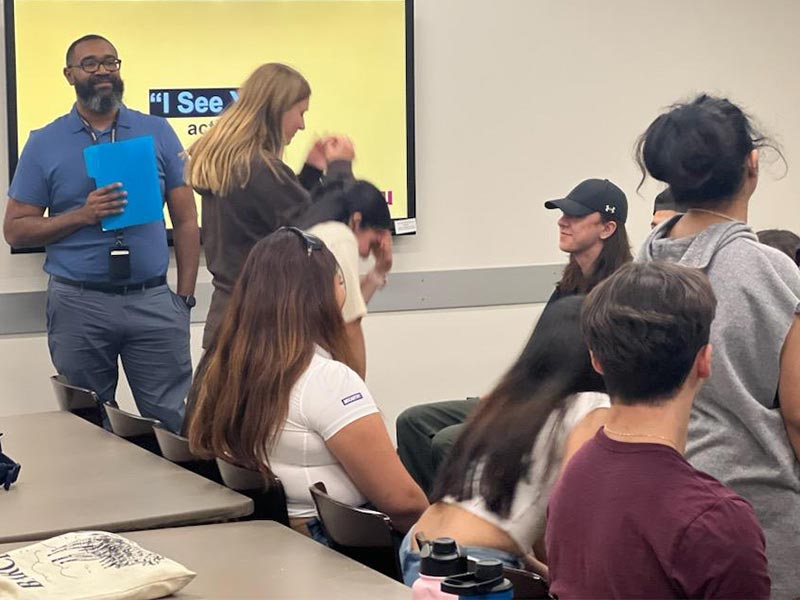In the summer of 2024, I was asked to present to 30 Barrett Summer Scholar Ambassadors. The Barrett Summer Scholar Ambassadors are ASU student workers who will work a week-long summer camp for students participating in the Barrett Summer Scholars program. I was asked to present to these young professionals about inclusivity, and more specifically, working with diverse populations. During the presentation, I had the Ambassadors participate in an activity I call “I See You”. For the activity, I have the ambassadors sit in two rows facing each other. After everyone is seated, there is a list of 10 statements I read, and if the statement is true for the ambassador, I ask them to stand up. The statements are light-hearted to begin, with examples including Stand up if:
- you ate breakfast this morning
- you are from Arizona?
However, as we move through the activity, the statements become more personal. Stand up if:
- both of your parents are alive?
- you have ever been yelled at?
- you have ever been in love?
Of course, as we moved through the activity, the more serious the tone of the room became. After completing the activity, I informed the ambassadors where the activity originated. I had previously done the activity with inner-city youth at Anytown camps. At those camps, we would do the activity, but the statements were even more personal. Stand up if:
- you have ever had to fight when you did not want to
- you ever been coerced into sex when you did not want to?
- you ever brought a weapon to school for protection?
By sharing the origins of the activity, plus their own participation, I believe the ambassadors were able to get a deeper understanding about the diverse backgrounds of each student they work with. Often diversity in education is connected to ethnic background or sexual preference. I believe the activity was a good reminder that diversity also includes background and socio-economic conditions. I believe it helped the ambassadors grasp that when working with K-12 students, it is important to have consideration of what those students’ home-life may be like, and how that home-life can affect them socially, emotionally, and educationally.
